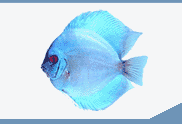

 |
||||||||||||
 |
||||||||||||
| Introduction to Freshwater Fish Parasites | ||||||
| Page 11 of 14 | Pages: 1 . 2 . 3 . 4 . 5 . 6 . 7 . 8 . 9 . 10 . 11 . 12 . 13 . 14 | |||||
NEMATODES Nematodes, also called roundworms, occur worldwide in all animals. They can infect all organs of the host, causing loss of function of the damaged area. Signs of nematodiasis include anemia, emaciation, unthriftiness and reduced vitality. Three common nematodes affecting fish are described. Camillanus Camillanus is easily recognized as a small thread-like worm protruding from the anus of the fish. Control of this nematode in non-food fish is with fenbendazole, a common antihelminthic. Fenbendazole can be mixed with fish food (using gelatin as a binder) at a rate of 0.25% for treatment. It should be fed for three days, and repeated in three weeks. Capillaria Capillaria is a large roundworm commonly found in the gut of angelfish ( Figure 20 ), often recognized by its double operculated eggs in the female worm ( Figure 21 ). Heavy infestations are associated with debilitated fish, but a few worms per fish may be benign. Fenbendazole is recommended for treatment (see above). 
Eustrongylides Eustrongylides is a nematode that uses fish as its intermediate host. The definitive host is a wading bird, a common visitor to ponds. The worm encysts in the peritoneum or muscle of the fish and appears to cause little damage.  Figure 22: An image of an Eustrongylides nematode.
Figure 22: An image of an Eustrongylides nematode.
Because of the large size of the worms ( Figure 22 ), infected fish may appear unsuitable for retail sales. Protecting fish from wading birds and eliminating the intermediate host, the oligocheate or Tubifex (soft-bodied worms), are the best means to prevent infection. more ... |
 |
|||||
| About Us :: Message Board :: Chat | |||||
| Library :: Photo Gallery :: Links & Resources :: Breeders & Sponsors :: Merchandise | |||||
| Website designed by: EthanCote.com | © 2001-2004, SimplyDiscus.com. All Rights Reserved. | ||||